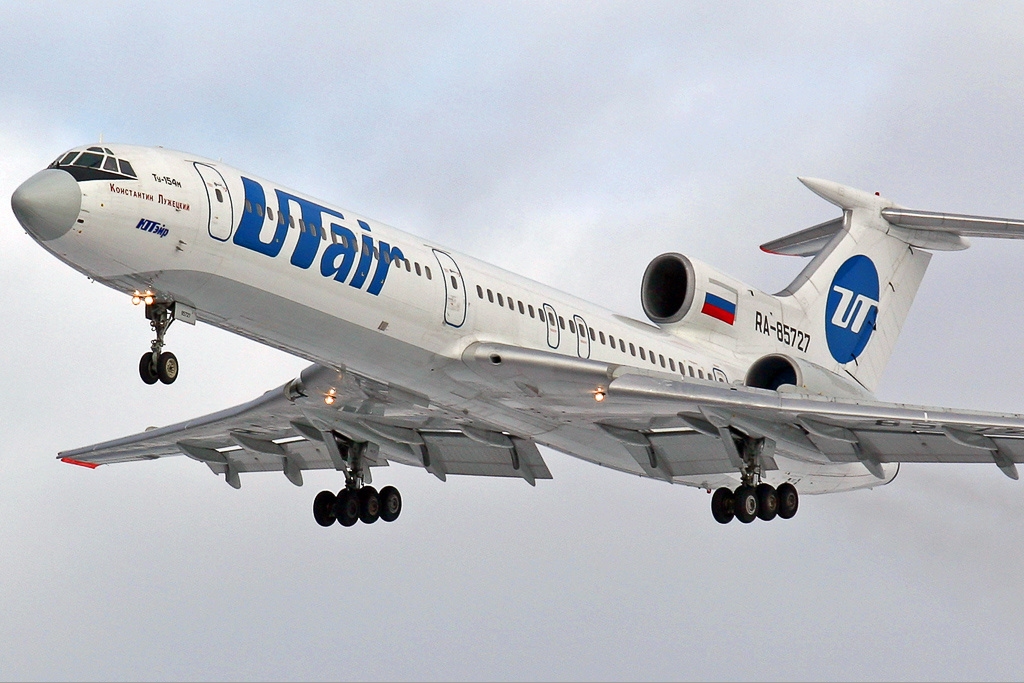✈️ Tupolev Tu-154 — Review
🧩 Overview
The Tupolev Tu-154 was a three-engine, medium-range airliner developed by the Soviet Union in the 1960s. It served as the backbone of Aeroflot and other Eastern Bloc carriers for over four decades, connecting major cities and remote regions alike. Its versatility and rugged design made it an aviation legend behind the Iron Curtain.
⚙️ Specifications
-
First Flight: October 4, 1968
-
Entered Service: 1972
-
Crew: 3 (pilot, co-pilot, flight engineer)
-
Engines: 3 × Kuznetsov NK-8 or Soloviev D-30 turbofans (rear-mounted)
-
Top Speed: ~975 km/h (Mach 0.87)
-
Range: ~5,280 km
-
Passengers: 150–180 (depending on version)
🛫 Design & Performance
The Tu-154 featured a rear-mounted trijet configuration, similar to the Boeing 727, but with a T-tail and highly swept wings. It was built for speed and durability, with reinforced landing gear and strong airframe construction that allowed it to operate on unpaved or icy runways — essential for the vast, rugged Soviet landscape.
Despite being heavy on fuel consumption and a bit loud by modern standards, it was fast, agile, and could fly at high subsonic speeds, making it very competitive during its era.
🪑 Passenger Experience
-
Interior: Functional and somewhat spartan by Western standards, though later models introduced improved seating and cabin aesthetics.
-
Noise: Notorious for being very loud, especially at the rear near the engines.
-
Comfort: Cabin pressurization and climate control were good, but overall comfort was more focused on practicality than luxury.
For Soviet passengers used to basic or slow turboprops, the Tu-154 felt like a leap forward — it brought jet-age speed to domestic and international travel.
🧱 Strengths
-
Extremely durable and rugged — built for unpaved runways and harsh climates.
-
High cruising speed for a subsonic jet.
-
Long service life; often flew 20+ years with proper maintenance.
-
Easy to operate in isolated regions without advanced airport infrastructure.
⚠️ Weaknesses
-
High fuel consumption (especially compared to Western jets).
-
Noisy engines and higher cabin noise.
-
Required a three-person cockpit, unlike newer airliners with two.
-
A few notorious accidents, especially in later years due to aging fleets and poor operator oversight.
📜 Legacy
The Tu-154 became a symbol of Soviet civil aviation. Over 1,000 units were built, and it served dozens of countries across the former USSR, Eastern Europe, the Middle East, Africa, and Asia.
Although mostly retired today, the Tu-154 flew into the 2020s for some military and government operators. Its final commercial passenger flight took place in 2020 in Russia.
It was also involved in high-profile historical events, including the tragic crash involving the Polish president in 2010.
🏁 Final Verdict:
| Category | Rating (★ out of 5) |
|---|---|
| Performance | ★★★★☆ |
| Durability | ★★★★★ |
| Efficiency | ★★☆☆☆ |
| Passenger Comfort | ★★☆☆☆ |
| Innovation (for era) | ★★★★☆ |
| Overall Legacy | ★★★★☆ |
The Tu-154 may not have matched the elegance or efficiency of its Western counterparts, but it was brutally reliable, iconic, and deeply woven into the fabric of Soviet and post-Soviet aviation. It’s remembered with a mix of nostalgia, admiration, and awe.

Comments are closed